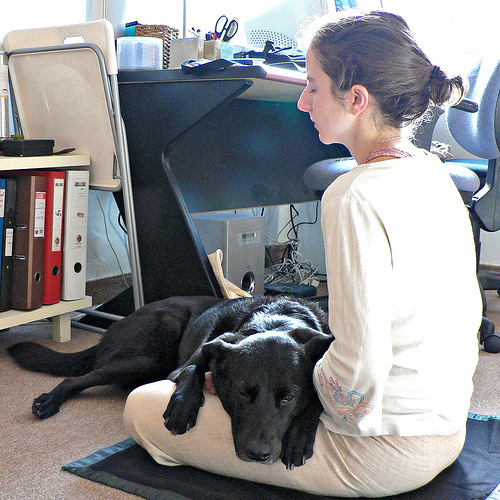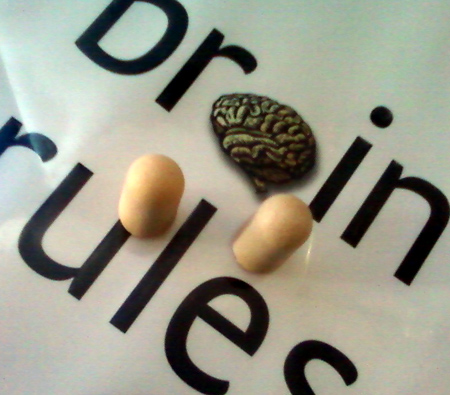
Some of the most powerful obstacles to self-motivation are broken ideas (or “cognitive distortions,” to use the formal term). A broken idea is any false thought that makes it harder to solve problems constructively. An introduction to them can be read here.
Examples of broken ideas
1. A man has been applying for jobs, but isn’t getting any interviews. He thinks “No one wants to hire me. I’m going to run out of money and be homeless.” This kind of thinking will make it harder for him to be motivated to apply for more positions, and he will tend to come across as less confident and positive to potential employers when he does have contact with them.
2. A mother is late dropping her children off to school, then has can’t get the car started when she tries to leave the school. She concludes “This day is a disaster.” This puts her in a pessimistic frame of mind, so that she tends not to do things that would make her day better and to interpret events in the worst possible light. (For more on this specific situation, see my articles Having a Bad Day? Here’s Why and How to Stop Having a Bad Day.)
The Red Flag
Detecting that a broken idea is in place is easy in the sense that, if you’re feeling bad, there’s a very good chance you’re nurturing one or more broken ideas. Being willing to pay attention to your own thinking does take some effort, which you can help bring out of yourself by committing to being mindful of your thinking in bad situations. It’s often harder to do this because of mood congruity, which gets in the way of imagining better times when we’re experiencing negative emotions. Fortunately, since we generally don’t like feeling bad, we’re often also driven to seek relief, which idea repair can provide.
Finding the broken idea
Identifying the broken idea requires reflecting on what we’ve been telling ourselves, whether mentally or (and this often easier) by writing it down. If you’re not sure what you’ve been telling yourself, start by writing down your present thoughts about the situation: broken ideas tend to persist as long as the mood they cause. This makes it possible to examine thoughts and figure out where they’re broken.
But What if The Broken Idea Is True?
Broken ideas are generally false (or at best, nothing more than a pessimistic guess), and they fall into specific categories of falsehoods. It’s easy to mistake them as truth because they often seem plausible: the job applicant might not find a job soon if he keeps searching in the way he is now. The mother’s experiences so far in her day have been unpleasant. Yet short of having supernatural powers, neither one of them can infallibly predict what will happen going forward, and both of them are taking a small number of incidents and imagining that they describe a large, absolute pattern.
Categories of broken ideas
To identify a broken idea, compare it to these categories. Devised by Dr. David Burns, they not only make it easier to spot a broken idea: they also supply the solution in a way described in more detail in Wednesday’s post.
- All-or-nothing thinking: Seeing situations in black or white; thinking in absolutes.
- Overgeneralization: Taking separate incidents, like rejected job applications or being late, and concluding that they’re controlled by a large, unvarying pattern.
- Mental filtering: Putting all one’s attention on negative qualities.
- Disqualifying the positive: Dismissing good factors in a situation.
- Mind reading: Making sweeping assumptions about what other people are thinking.
- Fortune telling: Making assumptions about how the future will turn out.
- Magnification and minimization: Exaggerating information, often to support a negative viewpoint, for instance exaggerating someone else’s positive qualities to make yourself look worse or their negative qualities in order to make them look like a villain.
- Emotional reasoning: Assuming that because something feels like it’s true, it is true.
- Should statements: Imagining that the way we want things to be has direct influence over how things really are. Often involves anger at other people for not acting the way we would make them act if we were in control of them.
- Labeling: Using words to generalize or explain a person or situation in a way that’s misleading or incomplete.
- Personalization: Exaggerating our idea of how much a situation relates to ourselves; taking responsibility or blame for things that are not in our control.
Wednesday: Repairing Broken Ideas
Once we’ve identified a broken idea, we can work on repairing it. My follow-up article addresses this step by step.
Photo by johndan





 Kelly McGonigal recently
Kelly McGonigal recently 




